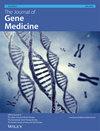Hepatocellular carcinoma (HCC) remains a formidable challenge in oncology, with its pathogenesis and progression influenced by myriad factors. Among them, the pervasive organic synthetic compound, bisphenol A (BPA), previously linked with various adverse health effects, has been speculated to play a role. This study endeavors to elucidate the complex interplay between BPA, the immune microenvironment of HCC, and the broader molecular landscape of this malignancy.
A comprehensive analysis was undertaken using data procured from both The Cancer Genome Atlas and the Comparative Toxicogenomics Database. Rigorous differential expression analyses were executed, supplemented by Gene Ontology and Kyoto Encyclopedia of Genes and Genomes enrichment analyses. In addition, single-sample gene set enrichment analysis, gene set enrichment analysis and gene set variation analysis were employed to reveal potential molecular links and insights. Immune infiltration patterns were delineated, and a series of in vitro experiments on HCC cells were conducted to directly assess the impact of BPA exposure.
Our findings unveiled a diverse array of active immune cells and functions within HCC. Distinct correlations emerged between high-immune-related scores, established markers of the tumor microenvironment and the expression of immune checkpoint genes. A significant discovery was the identification of key genes simultaneously associated with immune-related pathways and BPA exposure. Leveraging these genes, a prognostic model was crafted, offering predictive insights into HCC patient outcomes. Intriguingly, in vitro studies suggested that BPA exposure could promote proliferation in HCC cells.
This research underscores the multifaceted nature of HCC’s immune microenvironment and sheds light on BPA’s potential modulatory effects therein. The constructed prognostic model, if validated further, could serve as a robust tool for risk stratification in HCC, potentially guiding therapeutic strategies. Furthermore, the implications of the findings for immunotherapy are profound, suggesting new avenues for enhancing treatment efficacy. As the battle against HCC continues, understanding of environmental modulators like BPA becomes increasingly pivotal.



